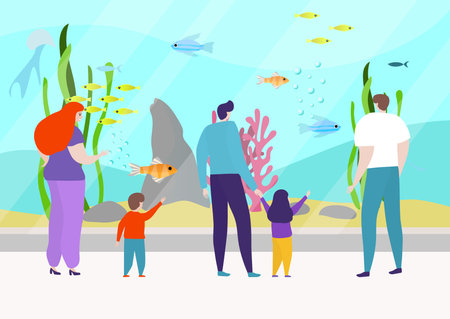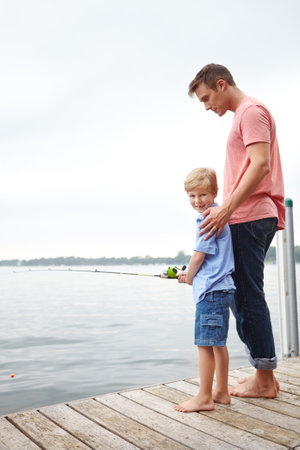Introduction to Family Fishing in India
Fishing is more than just a pastime in India; it is a cherished tradition that brings families together, especially during holidays and school vacations. Across the vast landscapes of India—from the tranquil banks of the Ganges and Yamuna to the vibrant backwaters of Kerala—families gather with their children, rods, and bait to enjoy the simple pleasures of nature. In many Indian households, fishing trips are seen as an opportunity to pass down ancestral skills, share stories, and strengthen family bonds. These outings are not only about catching fish but also about teaching children patience, respect for nature, and teamwork. Whether it’s using traditional bamboo rods in rural villages or enjoying modern angling gear near city lakes, family fishing reflects Indias rich cultural tapestry and offers unique moments for parents and kids to connect away from digital distractions. By introducing children to fishing, families create memories that last a lifetime while keeping alive an important part of India’s heritage.
Choosing the Right Fishing Spots for Kids
When planning a family fishing trip in India, selecting the right location is crucial for both safety and enjoyment, especially when teaching kids. With Indias vast landscape, you have access to a variety of fishing spots — from quiet village ponds and iconic rivers like the Ganges, to local lakes that are perfect for beginners. Here are some tips on finding child-friendly fishing locations:
Safety First: What to Look For
- Shallow Waters: Choose areas with shallow edges so children can fish safely under supervision.
- Calm Currents: Avoid fast-flowing rivers during monsoon season; opt for still or slow-moving waters.
- Crowd Levels: Less crowded places reduce distractions and ensure your kids can focus on learning.
Popular Kid-Friendly Fishing Spots in India
| Region | Recommended Spot | Best Time | Special Notes |
|---|---|---|---|
| North India | Ganges River banks (Uttarakhand) | Post-monsoon (Oct-Mar) | Avoid during Kumbh Mela due to crowds |
| West India | Pawna Lake (Maharashtra) | Winter months (Nov-Feb) | Ideal for camping and picnics |
| South India | Kaveri River (Karnataka) | After monsoon (Sep-Jan) | Check local festivals like Sankranti |
| East India | Brahmaputra River banks (Assam) | Dry season (Nov-Mar) | Avoid flood-prone months |
| Panjab/Haryana | Village ponds near Amritsar/Karnal | Throughout year except peak summer | Perfect for beginners and family gatherings |
Consider Monsoon Timings and Local Festivals
The Indian monsoon brings life to water bodies but also makes some areas unsafe due to high water levels or strong currents. Plan your trips during post-monsoon months when the weather is pleasant, and avoid fishing during major regional festivals unless you want to experience local fishing competitions or community events.
Quick Tips:
- Always check local advisories about water conditions.
- If possible, visit the spot beforehand to assess safety and facilities like toilets or shaded resting areas.
- If traveling with young kids, consider hiring a local guide familiar with safe fishing practices in the area.
Cultural Connect:
Fishing in India is often more than just a sport — it’s part of local culture, especially during harvest festivals like Baisakhi in Punjab or Onam in Kerala. Involving your kids in these traditions adds fun and helps them appreciate local customs while learning new skills.

3. Essential Fishing Gear and Safety Measures
When teaching kids fishing on family trips in India, having the right equipment and ensuring safety is of utmost importance. Here’s a guide to basic, budget-friendly gear suitable for children, easily found in local Indian markets, along with key safety precautions tailored for Indian waters.
Basic Fishing Gear for Kids in India
- Kid-Friendly Fishing Rods: Opt for lightweight telescopic rods or simple hand lines available in most local sports stores or at village fairs (melas). Brands like SureCatch and local makes are affordable and easy to handle.
- Fishing Reels: Simple spinning reels are best for beginners. Choose smaller sizes designed for children’s hands; these are widely stocked in Indian angling shops.
- Fishing Line and Hooks: Use monofilament lines (6-10lb test) and barbless hooks to ensure safety and ease of use. Local shops often sell ready-to-use “fishing kits” ideal for families.
- Bait Boxes: Reusable plastic containers or traditional metal dabba (lunch boxes) work well for storing worms or dough balls, which are popular baits across India.
- Floats and Sinkers: Brightly coloured plastic floats help kids spot bites easily. Small split-shot sinkers are enough for most Indian rivers, lakes, and ponds.
- Basic Tackle Box: A small plastic box or recycled tin can serve as a tackle box to keep all items organised and safe from curious monkeys or stray dogs near the water.
Safety Measures Every Family Should Follow
- Life Jackets: Always make children wear well-fitted life jackets, especially when fishing near deep rivers like the Ganges or backwaters of Kerala.
- Supervision: Never let kids fish unsupervised. Assign an adult to watch over them at all times, particularly near slippery ghats or rocky riverbanks.
- Avoiding Water Snakes: Teach children about common Indian water snakes such as the Checkered Keelback. Instruct them never to reach into muddy water or under rocks without checking first. Carry a stick to gently prod bushes or undergrowth before approaching.
- Weather Awareness: Keep an eye on weather patterns—Indian monsoons can cause sudden flooding, while summer storms bring lightning risks. If dark clouds gather, pack up immediately and seek shelter.
- Sunscreen & Headgear: Apply sunscreen generously and encourage wearing wide-brimmed hats or caps, as Indian sun can be harsh even during early mornings.
Packing Smart: Checklist for Family Angling Trips
- Bottled water and snacks (avoid leaving litter behind)
- A basic first-aid kit with antiseptic cream, bandages, and mosquito repellent
- A mobile phone with emergency numbers saved (including local Forest Department if fishing near wildlife areas)
- A camera to capture those proud moments when your child lands their first rohu or catla!
Pro Tip: Respect Nature
Teach children to handle fish gently and release undersized catches back into the water. This not only preserves fish populations but also instils respect for Indian rivers, lakes, and their unique ecosystems—a value that will stay with them for life.
4. Teaching Basic Fishing Skills to Kids
Introducing children to fishing in India can be both fun and educational, especially when you use simple, traditional techniques that have been passed down through generations. Here is a step-by-step guide to teaching kids the basics of fishing, using tools and methods familiar to Indian families.
Step 1: Introducing the Bamboo Fishing Rod
Bamboo rods are widely available and affordable across India. Start by showing your child how to hold the bamboo rod properly. Explain the different parts—the handle, the tip, and where the fishing line is attached. Let them feel the balance and flexibility of the rod, which makes it easy for small hands to manage.
Holding the Bamboo Rod Correctly
| Step | Description |
|---|---|
| 1 | Hold the rod with both hands close together for better control. |
| 2 | Keep elbows close to the body for stability. |
| 3 | Point the tip of the rod towards the water. |
Step 2: Baiting with Atta (Dough) or Earthworms
Baiting is an essential part of fishing in India. Most local fish like rohu or catla respond well to atta (wheat dough) or earthworms. Show your child how to make a small ball of atta and gently press it onto the hook, or how to thread an earthworm onto the hook without harming it. Remind them always to wash their hands before and after handling bait.
Bait Preparation Tips
- Mix atta with a little water until it becomes a soft, sticky dough.
- If using earthworms, dig in moist soil near rivers or ponds early in the morning for best results.
- Explain why we use natural bait, connecting this practice to local traditions.
Step 3: Casting and Waiting with Patience
The next step is casting the line into the water. Demonstrate how to swing the rod gently so that the bait lands quietly on the water surface—no splashing! Encourage your child not to rush. This is an opportunity to teach them about patience, as waiting for a fish requires calmness and observation.
Encouraging Patience: Indian Parental Tips
- Share stories from your own childhood fishing experiences in India.
- Play simple games like counting ripples or spotting birds while waiting for a bite.
- Praise children for their focus, regardless of whether they catch a fish.
This hands-on approach will help kids learn basic fishing skills while appreciating Indian nature and family traditions. With patience and encouragement, these early lessons often become cherished memories that last a lifetime.
5. Making Fishing Fun and Educational
Transforming a family fishing trip into an enjoyable and educational adventure is key to keeping kids engaged, especially in India where rivers and lakes are woven into the fabric of local culture. Begin by sharing fascinating Indian folk stories about rivers like the Ganges, Yamuna, or Godavari, and the legendary fish that inhabit them. For example, narrate tales of Matsya, Lord Vishnu’s fish avatar, to spark curiosity and imagination in children. Encourage your kids to observe their surroundings and identify native birds, plants, and insects along the riverbanks, turning each discovery into a learning moment.
Make fishing a collaborative activity by dividing tasks such as baiting hooks, casting lines, and recording catches. This promotes teamwork and helps children learn the value of cooperation—an important part of Indian family values. You could even create simple games: see who can spot the most types of fish or guess which local species will bite first. Bring along storybooks about Indian rivers or fish to read aloud during breaks under the shade of banyan trees.
At meal times, encourage kids to share what they have learned or retell their favourite folk stories. Celebrate every small achievement, whether it’s catching their first fish or tying a knot correctly. By blending traditional storytelling with hands-on activities and group participation, you ensure that every fishing trip becomes not just a family outing but a memorable learning experience rooted in Indian culture.
6. Environmental Awareness and Local Traditions
When teaching children how to fish during family trips in India, it is essential to instil a sense of respect for the environment and an understanding of local traditions. Indian rivers and lakes are not just sources of recreation but also lifelines for communities, wildlife, and cultural heritage. As you introduce your kids to fishing, explain the importance of keeping water bodies clean and why littering or polluting should always be avoided.
Respecting Rivers, Lakes, and Aquatic Life
Teach children that every river and lake has its own ecosystem, home to countless species of fish, birds, and plants. Encourage them to observe aquatic life without disturbing it. For example, remind them not to catch undersized fish or destroy nesting sites. Explain the concept of catch and release, which is increasingly popular in many parts of India, especially for preserving native species like Mahseer in Himalayan rivers or Murrel in southern ponds.
Introducing Local Conservation Practices
India has a rich tradition of water conservation rooted in ancient wisdom. Share stories about sacred rivers like Ganga, Yamuna, or Godavari and the rituals performed by locals to honour these waters. You can also involve your children in community-led initiatives such as cleaning drives along riverbanks or participating in awareness campaigns conducted by local NGOs. These experiences help them understand how collective efforts contribute to preserving aquatic habitats.
Community Rituals Connected with Fishing
Fishing in India often comes with unique cultural practices depending on the region. For instance, in Kerala’s backwaters, you might encounter traditional boat festivals or temple rituals blessing the catch before the season begins. In Bengal or Assam, fishing is closely tied to local festivals like Jamai Shashti or Bihu. Sharing these stories helps children appreciate that fishing is more than a hobby—it’s intertwined with people’s faith and way of life.
By blending environmental lessons with local customs, you empower your kids to become mindful anglers who cherish nature and respect traditions—a true reflection of Indian family values during every fishing trip.
7. Post-Trip Activities and Memories
Cleaning and Cooking the Catch – Indian Style
Once you return home from your family fishing trip, the adventure continues with cleaning and cooking the catch together. In India, this is a cherished ritual where everyone gathers around, sharing responsibilities. Teach kids how to clean fish carefully under the guidance of elders, ensuring safety at all times. Use traditional Indian methods such as marinating the fish with turmeric, chilli powder, salt, and a dash of lemon juice. You can prepare classic dishes like fish curry, fried fish masala, or even tandoori fish. Let children help in small tasks like mixing spices or arranging banana leaves for steaming. This not only connects them with their cultural roots but also makes them feel proud of their achievement.
Sharing Favourite Moments Together
After the meal, gather as a family to talk about the day’s highlights. Encourage everyone to share their favourite moments — whether it was catching their first fish, watching a kingfisher dive, or simply enjoying time by the riverside. These conversations help children express gratitude and build stronger bonds with family members. Take turns telling funny or unexpected stories from the trip; laughter always brings families closer.
Building Family Traditions for Future Trips
Use these post-trip discussions to create meaningful family traditions. For example, you can start a scrapbook where each child adds a drawing or note about what they learned. Plan to try new fishing spots across India — from Kerala’s backwaters to Himachal’s mountain streams — so every trip becomes unique. Set goals like learning new knots or trying different bait next time. Over time, these traditions become part of your family’s legacy, making every fishing trip more special than the last.
Passing Down Values Through Fishing
Family fishing trips in India are more than just about catching fish; they are about passing down patience, respect for nature, and teamwork to the next generation. By involving kids in every step—from cleaning and cooking to reminiscing about the day—you nurture values and create lifelong memories. These shared experiences strengthen family ties and ensure that your love for fishing continues through generations.

